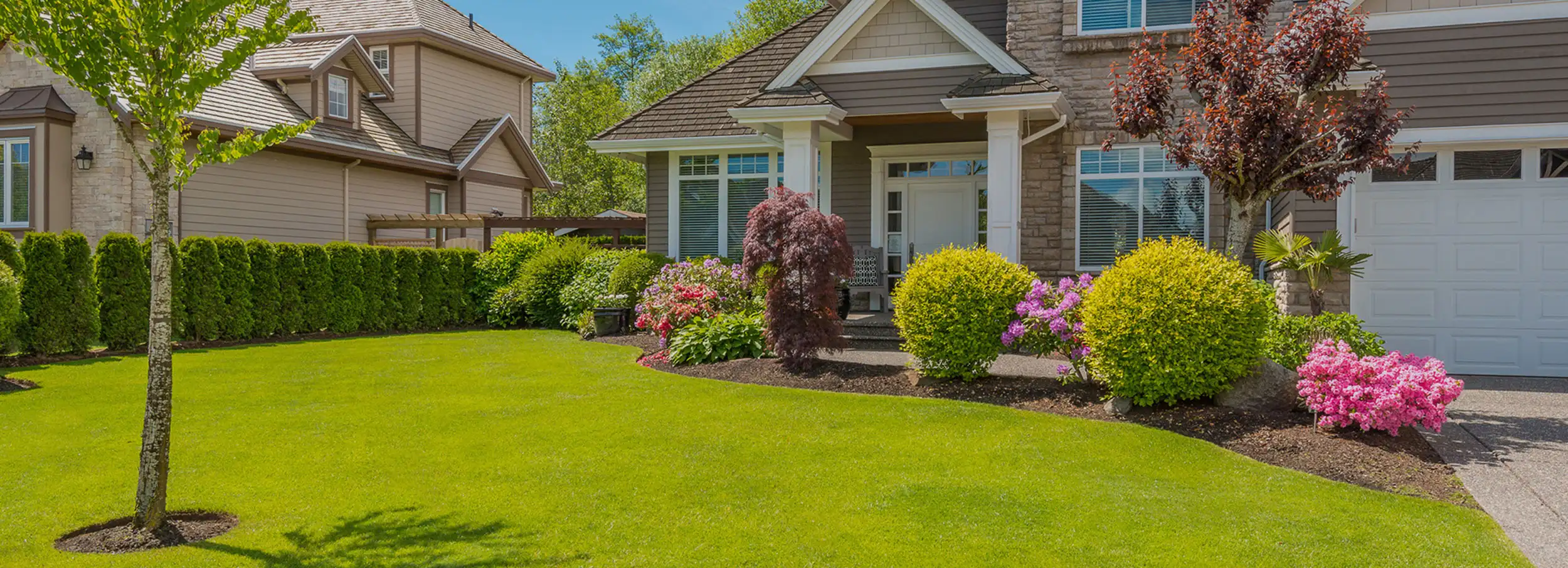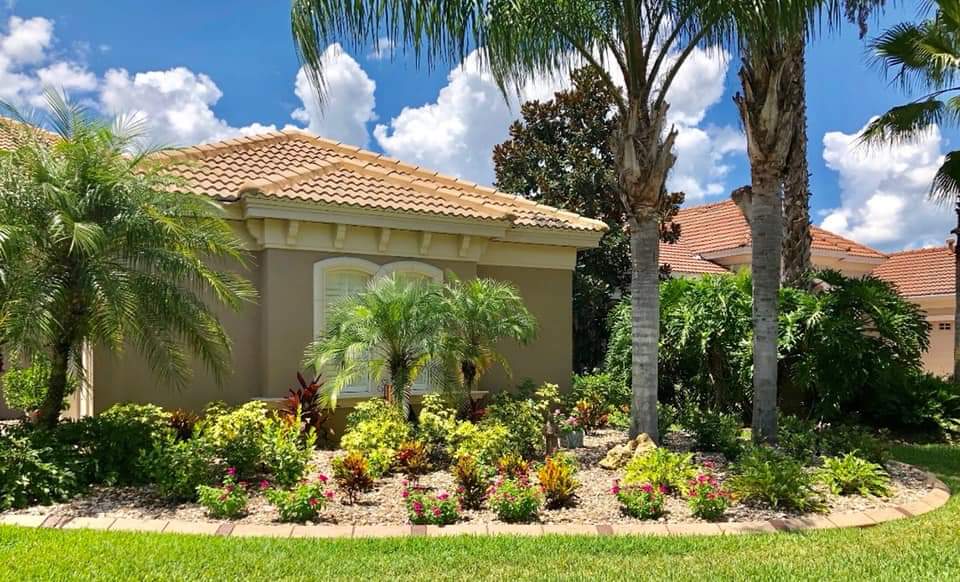Transform Your Outside Area with Specialist Palm Desert Landscaping Services
Transform Your Outside Area with Specialist Palm Desert Landscaping Services
Blog Article
A Comprehensive Guide to Designing and Implementing Effective Landscape Design Solutions
The art and scientific research of landscaping prolong past plain aesthetic appeals; they involve a thoughtful integration of layout concepts, ecological stewardship, and functional application. What strategies can one utilize to make sure these landscapes not only flourish but also grow in consistency with their environments?

Understanding Landscape Layout Concepts
One might wonder what fundamental aspects add to reliable landscape design. At its core, successful landscape layout rests on a number of key principles that direct the setup and selection of components within an area. These concepts include unity, equilibrium, rhythm, and proportion, each serving to produce a harmonious exterior atmosphere.
Unity refers to the natural partnership among various elements, making sure that they interact aesthetically and functionally. Equilibrium can be accomplished through asymmetrical or in proportion setups, allowing the landscape to really feel stable and welcoming. Proportion entails comprehending the scale of components in regard to each other and the surrounding environment, advertising visual consistency and convenience.

Evaluating Your Outdoor Area
Prior to carrying out the principles of landscape design, a comprehensive assessment of your outside space is vital. This initial examination aids specify the scope of your landscape design task and makes certain that your design straightens with the one-of-a-kind qualities of your residential or commercial property. Begin by evaluating the dimensions of your room, taking exact measurements to recognize the available area for various aspects such as paths, gardens, and patios.
Following, observe the existing functions of your landscape, including topography, soil quality, and water drainage patterns. These aspects substantially influence plant choice and placement. Furthermore, evaluate the sunlight exposure throughout various areas throughout the day, as this will certainly impact the sorts of plants that flourish in your yard.
Take into consideration the microclimates developed by frameworks, trees, and other obstacles, as they can affect temperature and dampness levels. Lastly, make note of any kind of existing plants or hardscape components that you desire to remove or retain. This comprehensive assessment lays the foundation for a educated and efficient landscaping remedy, ensuring that your design is not just aesthetically pleasing yet additionally functional and sustainable for several years ahead.
Lasting Landscaping Techniques
Incorporating sustainable landscape design methods is vital for producing an eco liable outside room. These methods not only promote ecological balance yet likewise boost the visual and practical value of a landscape. One fundamental technique is the application of native plants, which call for much less water and maintenance while supporting neighborhood wildlife. Implementing effective watering systems, such as drip watering, reduces water waste and makes certain that plants get sufficient moisture.

An additional reliable strategy is the tactical placement of trees and hedges to supply all-natural windbreaks and color, hence decreasing power prices (Palm Desert Landscaping). Rainfall yards can be incorporated right into the landscape style to handle stormwater drainage effectively, filtering contaminants prior to they go into rivers
Picking the Right Plants
Choosing the right plants for your landscape is essential to accomplishing both aesthetic charm and environmental harmony. The procedure starts with an understanding of your neighborhood climate, soil problems, and the particular microenvironments within your landscape. Assessing elements such as sunlight exposure, dampness levels, and existing vegetations will certainly aid you select plants that grow in your unique setting.
Consider integrating indigenous plants, as they are well-adapted to regional problems, call for much less maintenance, and assistance regional wild animals. In addition, choosing a diverse selection of varieties can boost biodiversity while decreasing the threat of disease and insect episodes. It is vital to evaluate the growth practices, flowering periods, and seasonal shades of prospective plants to look at these guys produce a useful source cohesive and vibrant landscape.
Additionally, believe about the planned use the room; as an example, if the location will certainly experience high foot web traffic, choose resilient ground covers. By thoughtfully choosing plants that straighten with both your ecological demands and aesthetic goals, you can create a lasting landscape that not just boosts your building but additionally adds positively to the bordering ecosystem.

Implementation and Upkeep Methods
When the ideal plants have been chosen for your landscape, the focus shifts to efficient implementation and recurring maintenance strategies. Effective setup begins with correct website preparation, that includes dirt testing to determine nutrient degrees and pH, adhered to by modifying the soil as needed. Very carefully arrange plants according to their growth practices and light demands, guaranteeing sufficient spacing to promote healthy and balanced growth.
Watering is an essential element of execution. Develop a watering her response routine that considers the specific requirements of each plant species, changing for seasonal modifications. Making use of drip watering systems can enhance water performance and minimize runoff.
Maintenance approaches need to be implemented to guarantee the longevity and vitality of your landscape. Routine tasks include weeding, mulching, and trimming to control development and avoid disease. Fertilization needs to be carried out based upon soil tests, offering the needed nutrients without over-fertilizing.
Keeping track of for diseases and insects is essential; early detection can avoid considerable damage. Seasonal adjustments to maintenance regimens, such as preparing and winterizing perennials for springtime growth, will certainly guarantee that your landscape remains aesthetically enticing and healthy year-round.
Final Thought
Effective application and ongoing upkeep even more make sure the long life and vigor of landscapes. By incorporating these components, landscapes can be changed right into beautiful, functional atmospheres that advertise biodiversity and contribute positively to community well-being.
One may question what fundamental components add to reliable landscape layout. At its core, effective landscape design hinges on several key principles that direct the plan and choice of aspects within an area.Choosing the right plants for your landscape is vital to attaining both aesthetic allure and eco-friendly consistency. It is crucial to evaluate the development behaviors, flowering periods, and seasonal shades of prospective plants to develop a vibrant and natural landscape.
Once the right plants have actually been selected for your landscape, the emphasis moves to effective execution and recurring maintenance methods.
Report this page